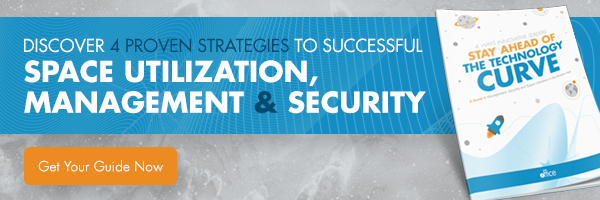6 Characteristics of the Innovative Workspace


Typically, when people think of an office space, they envision a drab environment devoid of vibrant and inviting colors, lights, or smiling faces; a place for work and little else. And, also, quite often seen as stifling creativity rather than sparking it. Thankfully, this is a workspace mainly in the rear view mirror, with the once distant future of business design almost upon us.
Technology has opened so many doors for enterprising executives, offering them opportunities to analyze data and identify their workforce needs from numerous angels. Often revealing needs that were previously overlooked or thought of lesser importance. The key takeaway from this research? The physical space is a critical influence, not only on quality and proficiency of work, but also on employee engagement and retention. And research indicates that employee engagement is one of the most powerful business tools, directly and indirectly affecting key business outcomes such as productivity, churn rates, customer satisfaction, and profit.
But how do you achieve this level of engagement? What characteristics lead to workplace satisfaction and innovation? If you look deeper than the newest office design trends, there are 6 principles that guide the most innovative and engaging workspaces.
“The characteristic of great innovators and great companies is they see a space that others do not. They don’t just listen to what people tell them; they actually invent something new, something that you didn’t know you needed, but the moment you see it, you say, ‘I must have it.’” – Eric Schmidt
1) Blurring the Line Between Home & Office
In a recent survey, Gallup reported that 25% of Americans work between 45-59 hours per week. Many of us find ourselves spending more time with our colleagues than with our own families. With that much time spent at the office, why would we not feel more enlightened and engaged in a space that feels like home?
To accomplish this, organizations are partnering with designers to consider the activities their employees would do at home, like entertaining or relaxing in the backyard, and are integrating them into the office space design. The result: large, plush sofas for conversation and collaboration, game rooms, and conference tables you might find in your dining room. LivePerson even incorporated brightly colored hammocks in one corner of their office.

2) Using Space Creatively, with the Workforce in Mind
For most businesses, real estate represents one of the largest chunks of the annual budget; so it only makes sense to utilize every square foot. Enterprises such as BarkBox, located in New York City, are taking raw, open spaces and transforming them into designs that are not only comfortable for their employees, they maximize on available space, including the walls. And behind each design decision, was the input of their workforce.
When creating an inspiring and engaging work environment, workplace managers should take into account the four “modes” of work: focus, collaborate, learn, and socialize. Utilizing these four modes, they should then consider the varying workforce personalities at play and design spaces that complement these temperaments. In short, this means having a little something for everyone: quiet, individual spaces for those easily distracted, whether visually or acoustically; collaborative spaces that are visually appealing, whether it be organic or linearly; and learning spaces that support those that thrive from visual presentations, as well as audible.
3) Support Diversity
Between the four generations that currently comprise our workforce, coupled with a mix of varying personality types, workplace managers have an opportunity to develop a unique and diverse workplace culture. While it’s natural to be a little hesitant of welcoming such diversity, it’s the innovators that embrace such heterogeneity. A workplace rich in culture is what separates the leaders from the rest, recognizing that it takes a multitude of different points of view to fully comprehend the complexity of business challenges. 
4) Flexibility & Mobility
Many managers take a micro managerial approach to leading their teams. While this might feel right for their personality, it does not work for many, and sends a clear message to the workforce that they are not fully trusted. This sets the tone and defines the workplace culture, typically stifling growth and innovation.
Innovative leaders recognize that they have to let go of this high-control, low-trust management style, taking a more flexible approach. This empowers their people to be creative and develop a skill set that will help advance them in their careers.
When it comes to the workspace itself, this means offering a variety of work options, such as teleworking and hot desking, to fulfill the workforce needs. For optimal flexibility, this means furnishing employees with mobile technology and designing an office that encourages movement from space to space.
5) Attracts & Retains Top Talent
The current unemployment rate for the U.S. is 5%, making the labor market highly competitive. As a result, enterprises are having to think outside the box, often using the workspace as a recruiting tool. The goal is to not only attract rising industry leaders, but to retain them as well. This means designing a space that makes a positive first impression; a place where he or she can envision spending time at long-term.
6) Continuously Evolves
Being a true leader means continuously evolving; and this goes for our workspace tools as well. Innovation isn’t a one-time thing, it means consistently and aggressively reaching above and beyond what has been done before. As outside influences progress, workspace managers must be at peace with taking risks, regarding the input of their employees as a valued tool for progress.
Workspaces that foster creativity and collaboration are designed with an acute understanding of the work accomplished on-site, as well as the individuals that occupy the space. From the startup company to the global enterprise, workspace management teams are now utilizing their real estate as a business tool; and the results speak for themselves – increased productivity and an engaged workforce; both powerful influences on the bottom line.
